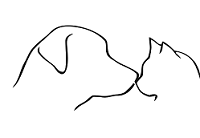
|
Faire un don par paypal : cliquer sur "faire un don"
Merçi à nos visiteurs |
authors (intermediate) Purpose of CategoriesCategories (also known as "tags") are a way to organize and find related pages. Categories are implemented by default in PmWiki 2, and in most wikis they don't require any special code or markup, they're just a useful convention. The idea is that every page that falls into a particular subject area should have a link to a shared page containing links to other pages on that subject. These pages are created in the Category group, and thus these subject areas are called Categories. Using CategoriesGetting Categories to work requires two steps, the first of which is adding links to each Category. A Category named Subject is created by adding a link to Category.Subject on any page. When you add the link to a page, the page can be described as being in the Category "Subject". There is a special markup for creating these links which makes Categories work more smoothly: [[!Subject]] will create a link to Category.Subject. So [[!Subject]] is a kind of shortcut to the page Subject in the category group. If you click on the category links on a page, initially you'll just be taken to an empty page named Category.Subject. The second step in setting up Categories is to modify the behavior of pages in the Category group so that they will display a list of all pages containing links to Category.Subject. This is relatively simple to do:
This will cause the footer on every page in the Category group to display a list of links to pages that reference that page in the category group. It is worth noting that rather than adding this to Category.GroupFooter, the pagelist code could be added to Category.GroupHeader to similar effect; it just depends on whether you'd prefer to have the list of pages appear before or after any text that you add to the individual category pages (which can be edited just like normal pages). Because we use the normal PageList Similarly, there's no requirement that a "category page" has to be in the Category group -- any page can define a "category" of pages that link to it. An administrator can override the default category group name of "Category" by setting the $CategoryGroup variable in config.php to another group name. RecapSo, by adding the link [[!Subject]] to a page, a link to that page will automatically appear on the page Category.Subject, as long as the GroupFooter for the Category group has been tweaked appropriately. Thus, you can create a page that automatically creates an alphabetized list of all movies discussed on your wiki by creating links to [[!Movies]] on each film's page; the resulting automatic list would be on the page Category.Movies. authors (advanced) Category NestingCategories have the potential for even greater usefulness because Film.ShaunOfTheDead [[!Horror]] [[!Comedy]] [[!2003]] Film.InMyFathersDen [[!Drama]] [[!2004]] Film.TheCorporation [[!Documentary]] [[!2003]] Now then, we can create So, what happens when we display Finally, in
Category.Category
Category.Genre
Category.Comedy
Film.ShaunOfTheDead
Category.Drama
Film.InMyFathersDen
Category.Documentary
Film.TheCorporation
Category.Horror
Film.ShaunOfTheDead
Category.Year
Category.2003
Film.ShaunOfTheDead
Film.TheCorporation
Category.2004
Film.InMyFathersDen
Note however that this isn't a "strict" hierarchy--i.e., any page or category can appear simultaneously in multiple categories. For example, Each category page can have content text before the generated list, e.g., to give a generic description of things in the category. (Or it can be empty, which works fine.) It can also contain associations to related categories ("see also" references). For example, in a tourism wiki, the ''bed and breakfast" category might contain a see-also reference to the "self-catering" category. administrators (intermediate) The Guts of the Category MarkupAs mentioned, all of the necessary markup features for Categories are enabled by default in current releases of PmWiki 2.0, but here's how they work for those who are interested. The use of the Category group as the repository for all categories is determined by setting the $CategoryGroup variable, and the special [[!Subject]] markup is activated by a call to the Markup() function: SDV($CategoryGroup,'Category');
Markup('[[!','<links','/\[\[!([^\|\]] ?)\]\]/',
"<span class='category'>[[$CategoryGroup/$1]]</span>");
Coming Up With Good Category SchemesThe hard part about using categories is choosing a good vocabulary. Site content managers may wish to follow the Guidelines for the establishment and development of monolingual thesauri (ISO 2788-1986) and the Guidelines for the establishment and development of multilingual thesauri (ISO 5964-1985). Questions to think about include:
Or you can just let people use whatever category terms they find meaningful. A vocabulary (or "folksonomy") will emerge over time. ContributorsRadu, John Rankin, SolaRoofGuy, David A Spitzley << Passwords | DocumentationIndex | Page lists >>
This page may have a more recent version on pmwiki.org: PmWiki:Categories, and a talk page: PmWiki:Categories-Talk. |